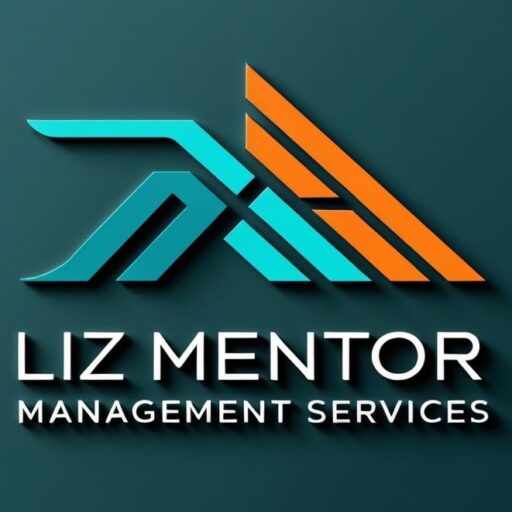Developing the Succession Plan: From Vision to Action
Once you’ve prepared for succession planning, gathered data, and identified potential leaders, it’s time for the next critical step: developing the succession plan. This phase transforms strategy into actionable steps, ensuring that your organization is ready for leadership transitions and future growth.
Developing a succession plan isn’t just about naming successors—it’s about building a roadmap that aligns with your company’s objectives, culture, and long-term vision. A strong plan anticipates challenges, develops talent, and ensures business continuity, even when key leaders depart.
In this article, we’ll explore the process of creating an effective succession plan, from prioritizing objectives to drafting strategies and setting measurable goals.
Prioritize What the Succession Plan Will Address
The first step in developing a succession plan is determining what the plan will focus on. Not every position requires the same level of planning, and not every employee will be a candidate for leadership roles.
Prioritization involves:
Identifying critical roles: Focus on positions that are essential to business continuity, culture, and strategy.
Assessing impact: Consider how the departure of a role might affect operations, client relationships, or team morale.
Aligning with business goals: Ensure the plan supports long-term objectives rather than just filling vacancies.
By prioritizing, you ensure that your plan addresses the areas that matter most, maximizing impact and minimizing risk.
Setting Goals and Objectives
Once priorities are established, the next step is defining goals and objectives for your succession plan. Goals should be clear, measurable, and aligned with the organization’s strategic direction.
Examples of goals include:
Preparing high-potential employees for leadership roles within three years.
Creating a talent pipeline for key departments to reduce reliance on external hires.
Ensuring knowledge transfer for critical functions before retirements or departures.
Objectives break these goals into actionable steps. For example, if your goal is to prepare employees for leadership, objectives might include mentorship programs, leadership training, or rotational assignments. Clear goals and objectives provide a roadmap, guiding decision-making and accountability.
Developing a Strategy for Achieving Goals
With goals in place, it’s time to craft a strategy that turns objectives into actionable initiatives. This involves identifying the methods, resources, and timelines necessary to develop future leaders effectively.
Key elements of a successful succession strategy include:
Talent Assessment: Evaluate potential successors based on performance, skills, and leadership potential.
Development Plans: Implement targeted training, mentorship, and stretch assignments to prepare candidates.
Knowledge Transfer: Ensure critical institutional knowledge is shared through documentation, shadowing, and coaching.
Monitoring and Evaluation: Track progress regularly to adjust plans and address skill gaps.
A well-defined strategy ensures that your succession plan is not just theoretical—it becomes a practical roadmap for leadership continuity.
Drafting the Succession Plan
Drafting the plan is where all preparation, prioritization, and strategy converge into a concrete document. A robust succession plan typically includes:
Key Roles: List the positions critical to business continuity and strategic goals.
Potential Successors: Identify internal candidates ready for development, including their current skills and growth areas.
Development Actions: Outline specific initiatives such as mentorship, training, and project assignments.
Timelines: Set realistic deadlines for development milestones, ensuring readiness for transitions.
Contingency Plans: Address unexpected departures, external hires, or emergency scenarios.
The plan should be clear, detailed, and flexible, allowing adjustments as business needs or employee readiness evolve.
Aligning the Plan With Organizational Strategy
A succession plan works best when it is fully integrated with the organization’s broader strategy. Leadership transitions are not just HR exercises—they affect company culture, operational efficiency, and long-term growth.
Aligning your succession plan means considering:
Strategic Priorities: Ensure successors are prepared to lead initiatives critical to business goals.
Cultural Fit: Candidates should reflect the organization’s values and help maintain or strengthen company culture.
Future Needs: Anticipate market changes, technological advancements, or regulatory shifts that may require new leadership capabilities.
By keeping strategy at the forefront, the succession plan becomes a tool for sustainable growth rather than a reactive measure.
A Practical Illustration: Building the Plan
Imagine a healthcare company anticipating retirements in its senior management team. After identifying critical roles, the HR team develops a succession plan with clear objectives: ensuring continuity in patient care, maintaining compliance standards, and fostering leadership growth.
The strategy includes:
Leadership training programs tailored to department heads.
Mentorship pairings between outgoing leaders and high-potential employees.
Shadowing opportunities for critical decision-making processes.
Regular progress reviews and skills assessments to track readiness.
By drafting a detailed, actionable plan, the company ensures that when leaders retire, operations continue smoothly, and emerging leaders are confident, capable, and aligned with organizational priorities.
Overcoming Common Challenges
Developing a succession plan isn’t without obstacles. Common challenges include:
Identifying the Right Candidates: Not every high performer is a natural leader. Assess skills, potential, and cultural fit carefully.
Limited Resources: Training programs, mentorship, and development initiatives require investment. Prioritize initiatives with the highest impact.
Resistance to Change: Some employees or managers may be skeptical of succession planning. Communicate benefits clearly and involve stakeholders early.
Balancing Short-Term Needs: Succession planning should not distract from day-to-day operations. Integrate planning into regular business processes.
Awareness of these challenges allows you to address them proactively, ensuring the plan is both effective and sustainable.
Practical Strategies for Effective Succession Planning
Engage Leadership: Ensure executives champion the plan and participate actively in mentoring and development.
Develop a Talent Pool: Identify multiple potential successors for critical roles, creating flexibility and reducing risk.
Invest in Development: Use formal training, mentorship, and experiential learning to prepare candidates.
Communicate Transparently: Keep employees informed about opportunities, expectations, and progress.
Review Regularly: Update the plan as business goals, workforce demographics, or market conditions change.
Consistency in these strategies ensures the succession plan is not static—it evolves with the organization and supports ongoing leadership development.
The Long-Term Impact of a Strong Succession Plan
A well-developed succession plan offers numerous benefits:
Business Continuity: Smooth transitions prevent operational disruptions.
Employee Engagement: Opportunities for growth increase retention and motivation.
Leadership Development: High-potential employees gain confidence and skills.
Organizational Resilience: The company can adapt to market changes or unexpected departures without losing momentum.
Ultimately, a strong succession plan strengthens the organization at every level, ensuring that leadership transitions are seamless and strategic.
Final Thoughts
Developing a succession plan is a deliberate, strategic process that transforms potential into readiness. By prioritizing critical roles, setting clear goals, crafting actionable strategies, and drafting detailed plans, organizations prepare for leadership changes with confidence.
Succession planning isn’t just about replacing leaders—it’s about cultivating a talent pipeline, supporting professional growth, and securing the long-term success of the business. The effort you put into developing a thoughtful, actionable plan today pays dividends in resilience, continuity, and organizational strength tomorrow.
Remember, leadership transitions are inevitable. What makes the difference is how prepared your organization is to navigate them—and a strong, well-developed succession plan is the key to turning change into opportunity.



